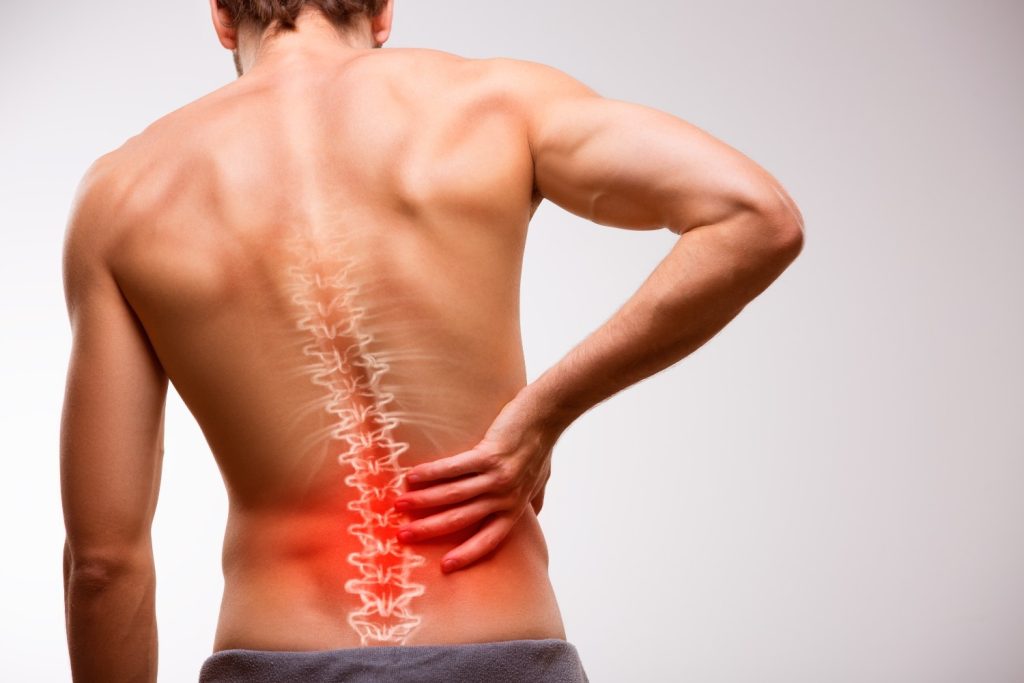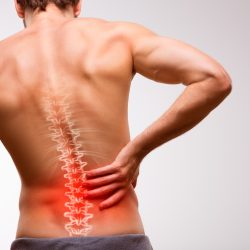
Low back pain is a universal experience, plaguing millions at some point in their lives. But behind that general ache lies a world of potential causes, each with its own story to tell. Let’s delve into the common culprits behind low back pain, explore the difference between nerve pain and pain from inflammation, and discover potential solutions to get you back on your feet, pain-free.
The Usual Suspects: A Rogues’ Gallery of Back Pain
- Disc Degeneration: These spongy discs between your vertebrae act as shock absorbers. As we age, they can wear down, causing pain and stiffness.
- Facet Arthropathy: The tiny joints between your vertebrae can become inflamed and arthritic, leading to pain with movement.
- Spinal Stenosis: This narrowing of the spinal canal can pinch nerves, causing pain, numbness, and weakness.
- Spondylolisthesis: A slipped vertebra can put pressure on nerves, resulting in pain that radiates down the leg (sciatica).
Nerve Pain vs. Somatic Pain: Understanding the Ache
Not all back pain feels the same. Nerve pain, often described as shooting, burning, or tingling, arises from irritated nerves. Somatic pain, on the other hand, feels dull, achy, and originates from muscles, ligaments, or inflamed tissues. Arthritis and inflammation typically cause somatic pain, while conditions like pinched nerves or radiculopathy trigger nerve pain.
Taking Charge of Your Back Pain: A Multi-Pronged Approach
Here’s the good news: low back pain doesn’t have to rule your life. A combination of strategies can help you manage pain and regain function:
- Physical Therapy: A personalized exercise program can strengthen core muscles, improve flexibility, and promote healing.
- Exercise: Regular low-impact exercises like swimming, walking, or yoga can improve core strength and reduce pain.
- Supplements: Certain Supplements may help with joint health, (consult your doctor before starting any supplements). Learn more at www.bluefiresupplements.com.
Emerging Technologies: PRP and Stem Cell Therapy
Traditional medicine often focuses on symptom relief. PRP (platelet-rich plasma) therapy offers a new approach. PRP injections harness your body’s own healing potential by concentrating platelets, rich in growth factors, and injecting them into the injured area to reduce inflammation and promote tissue repair.
Mesenchymal stem cell therapy takes things a step further. Stem cells, with their unique ability to transform into different cell types, hold immense promise for regenerating damaged tissues. Early research suggests stem cell therapy may be one of the only treatments that addresses the root cause of pain, instead of just treating symptoms.
Conclusion: Knowledge is Power
Understanding the cause of your low back pain is the first step to finding relief. By working with your doctor, exploring treatment options like physical therapy, exercise, and potentially PRP or stem cell therapy, you can reclaim an active and pain-free life. Remember, knowledge empowers you to take charge of your health and become an active participant in your healing journey.
Currently, Autologous Adipose Derived and Bone Marrow Derived Stem Cell therapies have the best evidence at this point in time. Other types of “advertised” stem cells are often not even stem cells or viable cells. Please make sure to ask about the type of cell and where it comes from. If it comes from another source, that should be your cue to walk away based on the current state of research.
Disclaimer: This blog post provides general information and does not constitute medical advice. Please consult your doctor to discuss your specific condition and the best course of treatment.


